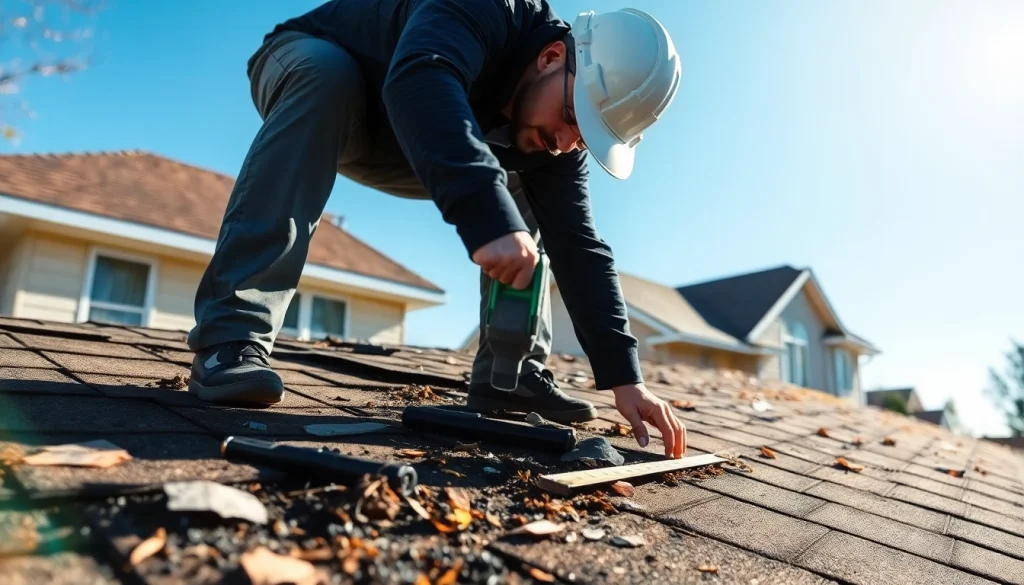
Understanding Insurance Roofing Claims
For homeowners, navigating the world of insurance roofing claims can feel overwhelming. Whether due to storm damage, age, or unforeseen issues, understanding how to interact with your insurance provider can significantly impact your financial well-being and peace of mind. In this comprehensive guide, we will walk you through the essential aspects of insurance roofing claims help, from understanding the claims process to avoiding common pitfalls.
What is an Insurance Roof Claim?
An insurance roof claim occurs when a homeowner files a request with their insurance company to cover the costs of repairing or replacing their roof due to damage. This process can be initiated after events like heavy storms, hail, fire, or other catastrophes that compromise the integrity of a roof.
Homeowners often fear that making a claim will lead to higher premiums or denial of coverage in the future. However, many policies include specific coverage for roof damage, allowing homeowners to seek compensation for necessary repairs. For comprehensive guidance on making insurance roofing claims, seeking the right insurance roofing claims help can be invaluable.
Common Causes for Roof Damage Claims
Numerous factors can lead to roof damage, and insurance policies typically address these scenarios. Common causes of roof damage claims include:
- Weather Damage: Severe weather conditions, such as heavy rain, hail, snow, and strong winds, can cause significant harm to a roof. For instance, hail can dent roofing materials, while strong winds can lift shingles.
- Falling Objects: Branches or debris from nearby trees can fall onto a roof, resulting in dents or punctures.
- Age and Wear: Older roofs may experience deterioration over time, making them more susceptible to leaks and damage.
- Improper Installation: If a roof isn’t installed correctly, it may lead to issues later on, such as leaks or structural weakness.
- Negligence: Regular maintenance is crucial. Neglecting small issues, like replacing missing shingles, can result in larger claims later.
Key Terms to Know
Insurance claims processes can include specific jargon that homeowners must understand. Here’s a breakdown of some essential terms:
- Deductible: This is the amount the homeowner is responsible for before the insurance coverage kicks in.
- Replacement Cost Value (RCV): The amount it would cost to replace the damaged item with a new one of similar type and quality, without deducting depreciation.
- Actual Cash Value (ACV): This reflects the item’s value at the time of loss, factoring in depreciation.
- Adjuster: An insurance adjuster evaluates the claim and damage to determine the compensation amount.
- Claim: A formal request to an insurance company for coverage on a loss.
Steps to File Your Insurance Roofing Claims
Filing an insurance roofing claim requires a methodical approach to ensure you maximize your coverage and avoid pitfalls. Here are the essential steps to follow:
Documenting the Damage Effectively
Effective documentation is vital for a successful claim. Here are some practical steps:
- Take Photographs: Capture clear images of all visible damage, including close-ups and wide shots to give context.
- List Damaged Areas: Create an inventory of all damaged areas and materials.
- Collect Weather Reports: Obtain documentation regarding relevant weather events that coincide with the damage timing.
- Get Repair Estimates: Before filing, it may be beneficial to obtain estimates from roofing professionals, as these can provide context to the insurer.
Communicating with Your Insurance Adjuster
Once you’ve documented the damage and filed a claim, the insurance adjuster will be assigned to review your case. Communication during this phase is crucial:
- Be Available: Ensure that you are reachable for necessary follow-ups and consultations.
- Provide Documentation Promptly: Submit all required documentation quickly to avoid delays.
- Ask Questions: Clarify any terms or decisions that are unclear to you.
- Keep Records: Maintain a log of all communications and documents exchanged.
Understanding Your Policy Coverage
Homeowners must familiarize themselves with their insurance policies before filing claims. Key points to consider include:
- Coverage Limits: Know the maximum amount your insurance will pay out for roof damage.
- Exclusions: Understand what is not covered by your policy, such as certain types of wear and tear or catastrophic events like floods.
- Claim History: Be aware of how previous claims may impact your current policy or future premiums.
Common Mistakes to Avoid in Roofing Claims
Even seasoned homeowners can make mistakes during the claims process. Here are some traps to avoid:
Neglecting to Document Everything
One of the most significant errors is not providing thorough documentation of the damage. Without proper records, your claim may be delayed or denied. Make a habit of taking photos and keeping detailed notes.
Waiting Too Long to File a Claim
Insurance policies often have strict deadlines for filing claims. Delays can compound deeper issues, such as additional damage from leaks. To prevent potential violations of policy terms, file your claim promptly.
Not Knowing Your Rights as a Homeowner
Homeowners have specific rights dictated by insurance law within their state, including the right to appeal denied claims or question low estimates. Familiarize yourself with these rights to advocate for yourself effectively.
Coping with Denied Claims: What Next?
Unfortunately, claims can be denied for a variety of reasons. If you find yourself in this situation, it’s essential to know the next steps to take:
Steps to Appeal a Denied Claim
When faced with a denied claim, take the following actions:
- Review the Denial Letter: Understand the reasons cited for denial and check for potential errors or misunderstandings.
- Gather Additional Evidence: If you believe more documentation could support your case, collect and present it clearly.
- File an Appeal: Follow the insurer’s process for contesting the denial, ensuring you meet all timelines.
Seeking Legal Assistance for Claims
In complicated cases or blatant disputes, consulting with an attorney experienced in insurance claims may be necessary. They can provide insights into your options and help amend any contractual discrepancies.
Insurance Negotiation Strategies
If you disagree with your adjuster’s offer, effective negotiation could work in your favor. Consider the following strategies:
- Know Your Value: Present evidence supporting what you believe is a fair compensation amount, including documentations like estimates and repair quotes.
- Stay Professional: Remain calm and respectful when communicating; this fosters a productive dialogue.
- Be Prepared to Walk Away: Know when it’s time to escalate or switch paths if dissatisfied. This includes exploring mediation or legal routes.
Finding Professional Help for Your Roofing Claims
Sometimes, the best course of action is to enlist professional assistance. Roofing experts and public adjusters can improve your chances of a successful claim.
Working with Roofing Experts
Engaging with experienced roofing contractors not only provides solid repair solutions but also assists in navigating the claim process. Their expertise can reinforce your claim and identify pre-existing conditions that may be misconstrued by insurers.
Using Claim Assist Services
Claim assistance services enable homeowners to streamline their claims process. These services may include help with documentation, communication with insurance companies, and claims tracking.
Benefits of Hiring a Public Adjuster
A public adjuster works on behalf of the homeowner rather than the insurance company. They ensure that your claim is thoroughly evaluated, negotiating for a better payout. This service can be especially helpful for complex claims or large losses.






